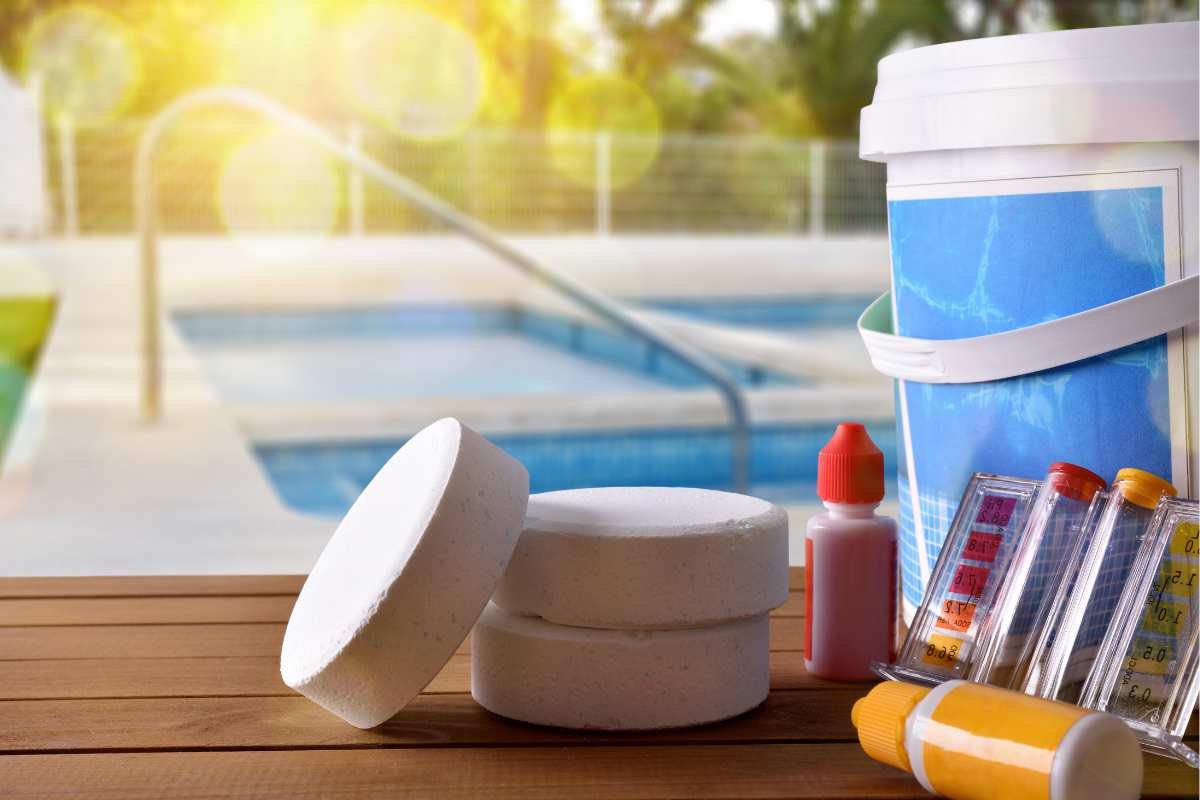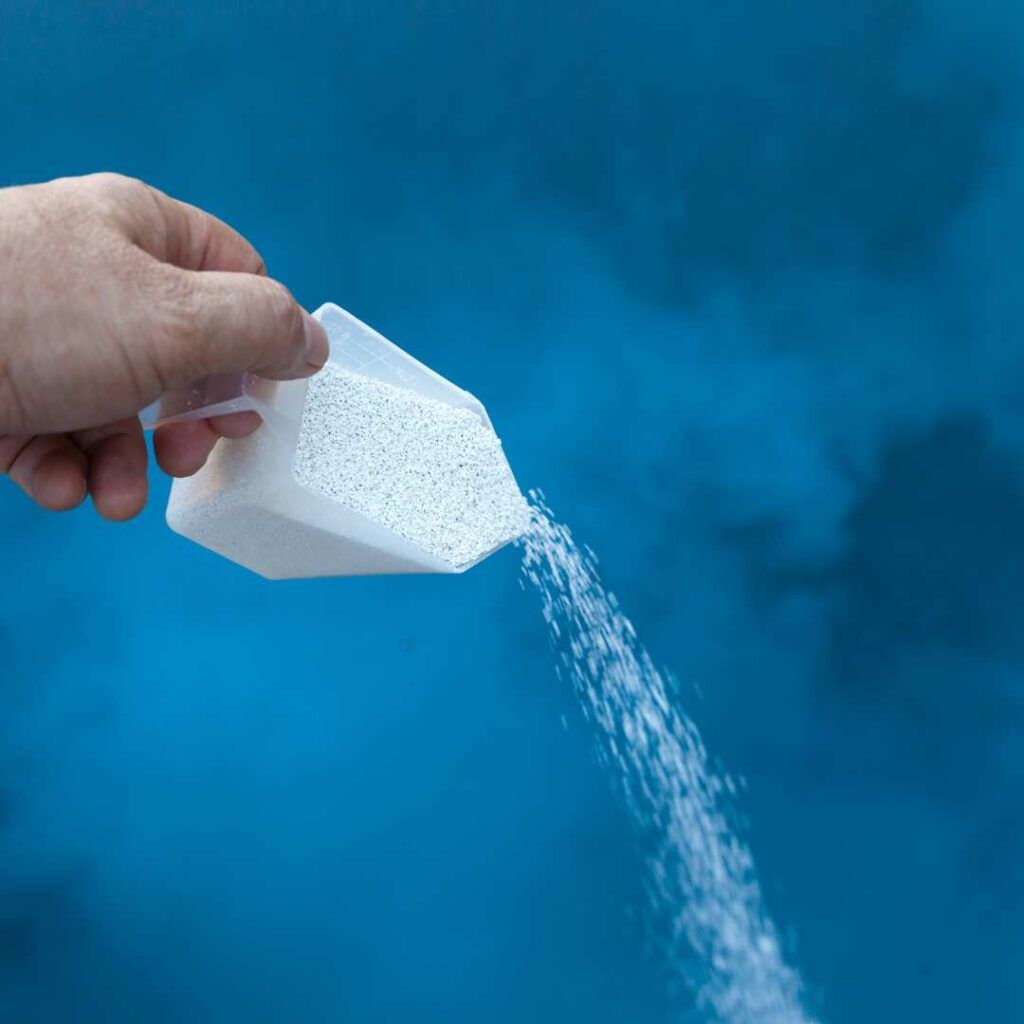Mastering Pool Water Quality: A Dive into the Science

When it comes to a perfect pool day, safety is the name of the game. Untreated pool water can play host to unwelcome guests like E.coli, Salmonella, and Legionella, putting your aquatic fun at risk. So, let’s take a deep dive into the science of maintaining pristine pool water.
The Chlorine Champion
Chlorine takes center stage, and for good reason. It’s a cost-effective powerhouse for balancing pool water chemistry. While alternatives like bromine, ozone, and UV radiation exist, chlorine remains a top choice.
When we add chlorine to our pools, it transforms into hypochlorous acid (HOCl), which then combines with oxygen to form hypochlorite (ClO). Together, they create free chlorine – the superhero that sanitises your pool. It’s the key player in breaking down microorganisms, like bacteria and algae, destroying them from within.
Chlorine Application
Adding chlorine comes in various forms – liquids, tablets, and granules. Liquids simply pour in, tablets can use a dispenser or automatic chlorinator, and granules are pumped into the water, dissolving and distributing via the filtration system.

Monitoring Chlorine Demand
Ensuring swimming pool water quality relies on monitoring chlorine demand. This metric reveals the gap between chlorine added and residual chlorine left after a set time. A value of zero means no harmful microorganisms; less than total chlorine means adequate treatment.
The Shocking Truth
Sometimes, regular chlorination falls short. That’s when ‘shocking,’ or super chlorination, comes to the rescue. It’s a powerful boost in chlorine levels, ensuring bacteria and algae meet their match. Weekly shocking keeps chlorine at a safe level, using cyanuric acid to stabilise it over time.
Pool Water Chemistry
The key factors influencing pool water chemistry are pH, alkalinity, and calcium hardness.
pH Balance
This refers to water acidity. The ideal range is 7.4 to 7.6. Straying outside can irritate swimmers’ skin, affect bacteria control, and even corrode metal fixtures or cause scaling.
Alkalinity Buffer
Alkalinity keeps pH in check, stabilising it within the recommended 100 to 150ppm range.
Calcium's Role
Calcium hardness contributes to water cleanliness. Levels should sit between 150 to 400ppm. Too low makes water feel slimy, while too high causes cloudiness and plumbing issues.
Temperature Effect
Water temperature impacts chlorine effectiveness. Between 26°C to 30°C is the sweet spot. Too low makes disinfection challenging, while high temps can lead to scaling.
Safe Handling and Storage
Remember, pool chemicals demand respect. Follow manufacturer instructions, learn about their dangers, and always store them in a cool, dry place away from sunlight. Keep different chemicals well apart.
Expert swimming pool water management
Contact Aqua Engineering today for personalised guidance and ensure your pool remains a safe and enjoyable oasis for all. Your swim starts here!





